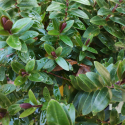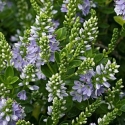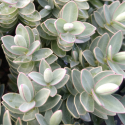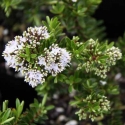Hebe




One of the largest species (90 – 100) of evergreen shrubs, most of which are native to New Zealand, the Hebe includes many first-rate plants which can be used to excellent effect in the structure of a garden design. The genus includes plants with shrubby, tree-like, sprawling and compact habits. They are highly desirable for their abundant floral displays and attractive foliage. There is such a wide variety including really interesting and colourful cultivars, with specific form, colour of foliage and showy flower spikes, that there is a Hebe for every desired effect that you wish to create.
The flower colours range from purest white through shades of pink to deep magenta, blue, mauve, lilac, purple, and wine red or burgundy. The flowers smother the shrub in spring or summer and some species repeat their flowering period during a single season.
READ MORE
The distinctive element in identifying the species is that the leaves, which have a leathery texture, grow oposite each other in pairs. Although Hebes are best suited to temperate climates, they are very forgiving and adaptable. They grow equally well in sun or shade in warm climates and prefer a sunny spot in cooler climates – as we all do! They like moist but well-drained soil and the broad-leafed types respond well to a trim once they have finished flowering. They do tend to get a bit woody if left untrimmed and although they will continue to flower, they will develop a straggly apearance - so feel free to cut them back.
The bigger-leafed species are more susceptible to frost and need some protection, especially when young. Some small leaf varieties are referred to as ‘whipcord’ Hebes (Hebe cupressoides) which have compressed, scale-like leaves resembling conifers. They have a dislike for intense heat and humidity so are better planted in the southern regions. They prefer a gritty, well-drained soil.
The genus is named after the Goddess Hebe. In Greek mythology, Hebe is the goddess of youth. She is the daughter of Zeus and Hera and was, prior to her marriage, the cup-bearer for the gods and goddesses of Mount Olympus, serving them nectar and ambrosia and heaven knows what else! So plant some Hebes and imagine that the Greek gods and goddesses have come to take up residence in your garden. You are sure to find a statue of Hebe to place in the midst of a group of the beautiful shrubs.
READ LESS
Special Bulk Deal... SHOW ME
Selected natives @ $9.99, 10 for $8 each
0 LISTINGS FOR HEBE
PAGE 1 ALL HL Nurseries Limited t/a Wairere Nursery0 LISTINGS FOR HEBE
826 Gordonton Road, R D 1, Hamilton 3281 Ph: (07) 824 3430 Email: